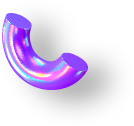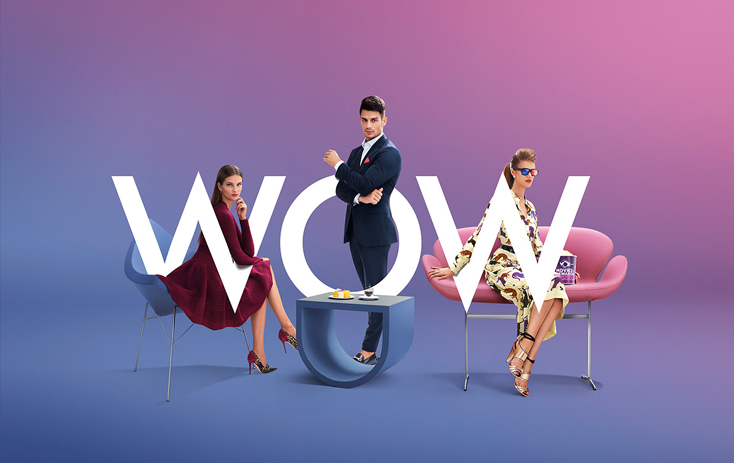Introduction: The Dynamic World of Digital Design
The field of digital design is constantly evolving, driven by technological advancements and changing user preferences. Staying ahead of the latest trends is crucial for designers who want to create modern, engaging, and effective digital experiences. In this blog post, we’ll explore the top digital design trends to watch in 2024.
Trend 1: Neumorphism
Neumorphism, also known as “soft UI,” combines the best aspects of skeuomorphism and flat design. It creates a realistic, 3D effect using subtle shadows and highlights, giving interface elements a tactile, almost physical appearance. Neumorphism is popular for its clean, modern look and its ability to create a sense of depth and interactivity.
Trend 2: Glassmorphism
Glassmorphism is characterized by the use of frosted-glass effects, creating a translucent, blurred background that adds depth and visual interest. This trend is often combined with vibrant colors and subtle gradients, resulting in a sleek and futuristic aesthetic. Glassmorphism is particularly effective for creating visually appealing interfaces and enhancing user engagement.
Trend 3: Dark Mode Design
Dark mode continues to be a popular trend in digital design, offering both aesthetic and functional benefits. It reduces eye strain in low-light environments, conserves battery life on OLED screens, and provides a modern, stylish look. Designers are increasingly incorporating dark mode as a standard feature, ensuring that their designs are versatile and user-friendly.
Trend 4: Microinteractions
Microinteractions are small, subtle animations that provide feedback and enhance the user experience. They can be as simple as a button changing color when hovered over or a notification badge appearing with a smooth animation. Microinteractions add a layer of polish and interactivity to digital designs, making them more engaging and intuitive.
Trend 5: 3D and Immersive Design
Advancements in technology have made 3D design more accessible and prevalent in digital design. 3D elements, animations, and interactive experiences create a sense of depth and realism, making interfaces more engaging and memorable. Immersive design techniques, such as augmented reality (AR) and virtual reality (VR), are also gaining traction, offering users unique and interactive experiences.
Trend 6: Minimalism and White Space
Minimalism remains a dominant trend, focusing on simplicity, clarity, and the effective use of white space. By removing unnecessary elements and distractions, minimalist designs create a clean, focused, and aesthetically pleasing experience. White space, or negative space, enhances readability and helps guide users’ attention to key content and actions.
Trend 7: Bold Typography
Bold typography is making a statement in digital design, with designers using large, eye-catching fonts to convey messages and create visual impact. This trend emphasizes readability and hierarchy, making it easier for users to navigate and understand content. Combining bold typography with minimalistic layouts can create a striking and memorable design.
Trend 8: Gradients and Vibrant Colors
Gradients and vibrant colors continue to be popular in digital design, adding depth, dimension, and energy to interfaces. Designers are experimenting with bold, unconventional color combinations and dynamic gradients to create visually stunning and engaging experiences. This trend is particularly effective for capturing users’ attention and creating a modern, dynamic look.
Trend 9: Custom Illustrations and Icons
Custom illustrations and icons add a unique and personalized touch to digital designs. They help convey complex ideas, enhance storytelling, and create a cohesive visual identity. As brands strive to differentiate themselves, custom graphics are becoming a key element in creating distinctive and memorable designs.
Trend 10: Sustainable and Ethical Design
Sustainable and ethical design practices are gaining importance as users become more environmentally and socially conscious. Designers are focusing on creating digital experiences that are not only visually appealing but also socially responsible. This includes considering the environmental impact of digital products, promoting inclusivity and accessibility, and ensuring ethical use of data and technology.
Conclusion: Embracing the Future of Digital Design
The digital design landscape is constantly evolving, with new trends and technologies shaping the way we create and experience digital content. By staying informed about the latest trends, such as neumorphism, glassmorphism, dark mode, microinteractions, 3D design, minimalism, bold typography, gradients, custom illustrations, and sustainable design, designers can create innovative and impactful digital experiences. Embrace these trends to stay ahead of the curve and deliver designs that resonate with users in 2024 and beyond.

